Enhancing Math Learning with Graphic Organizers
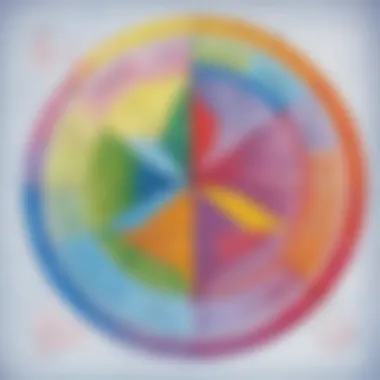
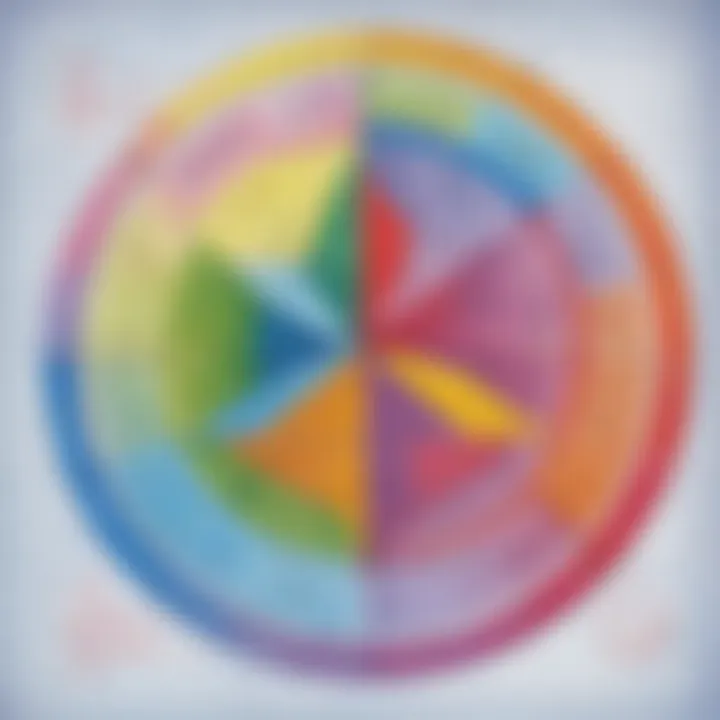
Intro
Graphic organizers have become influential tools in the landscape of math education, especially for elementary school kids. These visual aids aren’t just pretty pictures or fancy diagrams; they represent a structured way to display information that helps students grasp complex mathematical concepts. In a world where numbers can seem daunting, these organizers serve as lifebuoys, helping kids stay afloat while navigating through equations, facts, and figures.
In this article, we'll focus on the role that graphic organizers play in enhancing students' understanding of math. From visualizing problems to simplifying processes, they make math less intimidating. But how exactly do they work? Let’s break it down.
Creative Activities
Craft Ideas
Graphic organizers can be more than just visual aids; they can come to life through engaging craft activities! Take, for instance, creating a giant math web that visually maps out different math operations or concepts. Children can cut out colorful cards, write down math problems on each, and link them together using strings, much like a spider's web. This hands-on activity enhances not just their organizational skills but also their comprehension of mathematical relationships.
Step-by-Step Guides
To create a math concept web, follow these steps:
- Gather materials – You’ll need large sheets of construction paper, scissors, colored markers, and strings.
- Choose a central concept – Pick a math topic, such as addition or fractions, to focus on.
- Draw the web – On the large sheet, write the central concept in the middle.
- Create branches – Cut smaller pieces of paper for different related topics, like number lines or fraction circles. Write these on the cards and use strings to connect them to the central concept.
- Display it proudly – Find a wall in the classroom to showcase the web, reinforcing the topic visually.
This activity not only fosters creativity but also encourages collaboration among classmates, as they can discuss ideas as they craft.
Educational Value
Engaging in these creative activities has educational benefits. They promote active learning while allowing students to express their understanding in a visually stimulating way. Teachers can observe how children articulate their process and thought patterns, helping identify areas where additional support might be needed. Plus, these organizers serve a dual purpose by becoming study aids for future math assessments.
Fun Quizzes
Quiz Topics
Quizzes, when integrated creatively, can be another effective use of graphic organizers in math education. By incorporating topics that align with the visual aids being utilized, teachers can create quizzes on addition, subtraction, or even basic geometry.
Question Types
The variety of question types can make learning math feel like a game. Imagine a multiple-choice question using a visual math problem, where students need to identify the correct graphic organizer that represents a certain problem. Or true/false questions that ask if a particular graphic organizer is appropriately used for a specific math concept—like using a Venn diagram for comparing and contrasting.
Knowledge Reinforcement
These quizzes not only reinforce learning but also provide immediate feedback. They help teachers identify which areas students are struggling with, allowing for targeted instruction. Furthermore, it turns studying into a more enjoyable experience as kids get to engage with the material in varied formats.
Fact-Based Articles
Topics
Through fact-based articles regarding math concepts, teachers can enhance the learning experience further. Topics can range from basic number comprehension to more complex subjects like geometry and graphing.
Engaging Content
These articles can present information in a way that is digestible and enticing for young learners. Simplified explanations combined with illustrations can capture their attention and help break down challenging ideas.
Foreword to Graphic Organizers
In the world of mathematics, understanding and retention often makes or breaks a student's success. This introduction to graphic organizers sheds light on how these tools can serve as vital aids in facilitating comprehension and engagement in math education. Unlike traditional rote memorization, graphic organizers offer a visual dimension that helps kids navigate through complex concepts. For elementary school students, who are still forming their cognitive abilities, this approach is not just beneficial—it's transformative.
Graphic organizers draw connections between ideas, summarize information, and can often simplify even the most daunting of mathematical challenges. They can help students visualize relationships between numbers, understand problem-solving methods, and organize their thoughts. By incorporating graphic organizers into math lessons, educators not only make the learning process more enjoyable but also foster a deeper understanding of the material.
Defining Graphic Organizers
Graphic organizers are visual representations of information that serve as instructional tools. They come in many forms, such as concept maps, charts, and diagrams, and are designed to organize thoughts or illustrate relationships among various mathematical elements. Essentially, they act as blueprints of ideas, presenting information in a way that’s easy for students to grasp.
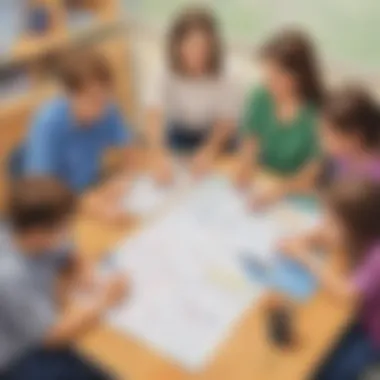
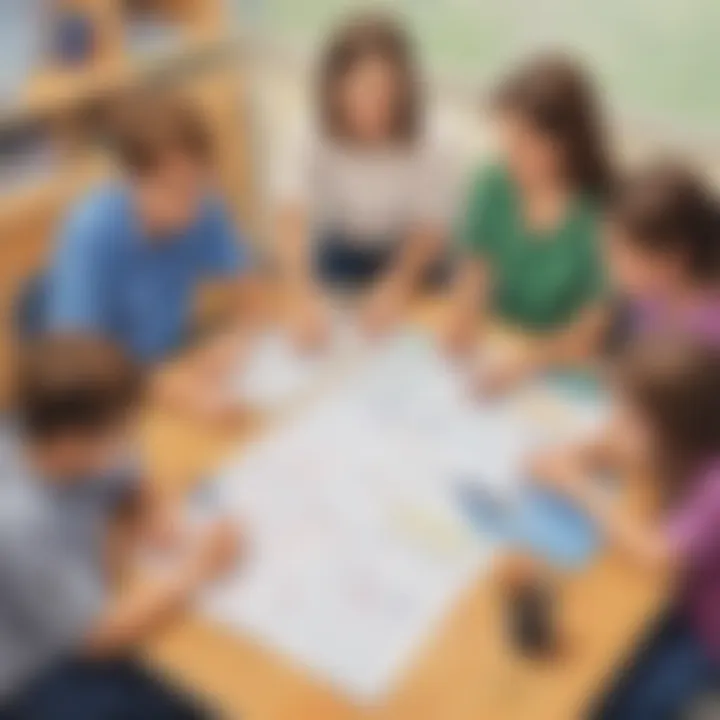
For example, consider a simple Venn diagram to compare even and odd numbers. Using this visual aid, children can see overlaps and distinctions without wading through heavy text. This kind of simple, intuitive structure is crucial for young learners who may feel overwhelmed by conventional math problems.
Importance of Visual Learning in Math
Visual learning plays a pivotal role in mathematics education, especially for younger students. Kids often absorb information better when they can see it depicted visually rather than solely through verbal or written instruction. Seeing is believing, as they say, and in math, this is particularly true.
When students can picture mathematical concepts, they often find it easier to make connections and apply their knowledge to real-life problems. For instance, a bar graph can depict the results of a survey, allowing students to analyze data in a straightforward manner.
According to studies in educational psychology, visual tools can enhance retention rates significantly. When students engage with material visually, they often experience a more profound understanding, leading to better performance on tests and assignments.
"Visual aids like graphic organizers are not just supplementary tools; they're essential in ensuring that the cognitive load on students is manageable."
In summary, introductory graphic organizers play a crucial role in math education. They simplify complex ideas, make learning more interactive, and support various learning styles—attributes that are especially beneficial to elementary school children.
Types of Graphic Organizers Used in Math
Graphic organizers play a critical role in math education, as they help instructors present complex concepts in an approachable way. In particular, they structure thoughts and information, making it easier for students to connect ideas and understand relationships between different mathematical concepts. This section dives into the various types of graphic organizers that can be particularly beneficial in math classrooms.
Concept Maps
Concept maps are visual representations that illustrate the relationships among various concepts. They resemble a web, with a main idea at the center and branches leading to related topics. This organizer is especially helpful for showing connections in math, such as the relationship between fractions, decimals, and percentages.
Using concept maps encourages students to think critically about how different mathematical ideas fit together. For instance, when teaching a unit on geometry, an instructor might create a concept map linking properties of triangles to the broader category of polygons. It forces students to go beyond rote memorization and fosters a deeper understanding of mathematical principles.
Additionally, creating concept maps can turn into a collaborative classroom activity. This gives students a chance to brainstorm and share their thoughts, enhancing their engagement with the subject matter.
Venn Diagrams
Who doesn’t love a good comparison? Venn diagrams offer an excellent way to visually compare and contrast two or more sets of data. In mathematics, this tool shines when teaching concepts like set theory, where students can identify common and unique elements in different groups.
For example, while working with even and odd numbers, a teacher can create a Venn diagram to help students see which numbers belong to each group and which are shared. By drawing out the differences and similarities, students can better grasp the nuances of these concepts. Visual aids, like Venn diagrams, make abstract ideas more tangible, aiding everyone from visual learners to those who may struggle to understand through text alone.
Flowcharts
Flowcharts serve as a fantastic way to depict processes and sequences, making them particularly powerful in math when discussing operations or solving problems. Picture this: a student wants to solve a multi-step equation. A flowchart could lay out each step clearly, guiding them from the initial equation to arriving at the answer step by step.
Such organizers can help break down what often feels like an overwhelming task. By seeing the math process laid out, students can visualize their journey through calculations. This not only bolsters their confidence but also reinforces the logical flow of mathematical thinking.
"Flowcharts simplify the math process, illuminating paths that might otherwise seem convoluted."
T-Charts
T-charts are a straightforward tool that allows students to list and compare two related concepts side-by-side. Typically, each side of the "T" contains information related to the concepts being examined. In math lessons, T-charts can be used to compare different types of functions or operations.
For example, when learning about addition and subtraction, a teacher might create a T-chart that lists problems and their corresponding solutions. This side-by-side format aids students in recognizing patterns and relationships between operations. Additionally, it can serve as a basis for discussions about problem-solving strategies, allowing students to express their thought processes and reasoning.
Cognitive Benefits of Graphic Organizers in Math
When it comes to learning math, understanding complex ideas can be a bit like trying to find your way through a maze. This is where graphic organizers step in, acting as the guiding light to help students navigate through the maze of numbers and concepts. With various types of graphic organizers available, they serve as visual tools that not only enhance comprehension but also support cognitive development. Let's break it down into three key benefits: improving comprehension, enhancing memory retention, and supporting critical thinking skills.
Improving Comprehension
Graphic organizers simplify the process of understanding mathematical concepts. For example, imagine a concept map laid out on the board. It showcases central ideas, with branches leading to related facts or formulas. This visual representation helps students see how different pieces of information connect, thus fostering deeper understanding.
Moreover, breaking down complex topics into smaller, digestible parts can be a game changer. When faced with a concept like fractions, instead of bombarding students with definitions and examples all at once, a flowchart can map out the steps of dividing or adding fractions. By following the flow of the chart, students can grasp the concept step by step – it’s like having a roadmap that keeps them on track.
"Visuals often make the abstract concrete, allowing learners to see math as a connected series of ideas rather than a jumble of unrelated facts!"
Enhancing Memory Retention


Memory plays a hefty role in learning, particularly in subjects like mathematics where one concept builds on another. Graphic organizers allow students to reinforce their memory by visually mapping out information. For instance, a T-chart can be used for comparing and contrasting two math strategies or solving similar problems using different methods. Each time students revisit the chart, they reinforce what they’ve learned. The repeated visual exposure is crucial for cementing knowledge.
Furthermore, when students engage with their own graphic organizers, it creates a personal connection to the material. These personalized visuals often linger in one’s mind longer than chunks of text. In fact, interacting with the material in a concrete way can boost memory retention significantly, acting as a memory aid, like the cornerstone in building their mathematical knowledge.
Supporting Critical Thinking Skills
Beyond comprehension and retention, graphic organizers serve as catalysts for critical thinking. They encourage students to organize their thoughts, evaluate relationships between ideas, and draw logical conclusions. Consider a Venn Diagram that helps students compare different geometric shapes. Not only do they categorize properties, but they also analyze how these properties contribute to the shapes’ characteristics.
Encouraging this kind of thinking fosters deeper analysis rather than rote memorization. Students begin to ask questions, see patterns, and develop problem-solving skills as they interact with the organizers. This shift from simple recall to analysis is crucial for developing critical thinking skills, which are essential not just in math but across all subjects.
In summary, the cognitive benefits of graphic organizers in math education are profound. By improving comprehension, enhancing memory retention, and supporting critical thinking skills, these tools equip elementary learners with the necessary skills to tackle math head-on. The role of graphic organizers in unlocking student potential cannot be overstated; they are vital companions on the academic journey.
Practical Application of Graphic Organizers in Math Classrooms
The practical use of graphic organizers in math classrooms is a cornerstone for effective learning. It goes beyond merely decorating worksheets; it transforms how students interact with mathematical concepts. An effective organizer can make abstract ideas more concrete and manageable. Picture a student grappling with the concept of fractions. By employing a graphic organizer, they can visually separate numerators and denominators, ultimately making sense of their relationship. This visual aid helps bridge the gap between complex notions and student understanding.
Integrating Organizers into Lesson Plans
Integrating graphic organizers into lesson plans is not just a sprinkle of creativity; it's a strategy that promotes understanding. To begin with, teachers need to choose the right type of graphic organizer that aligns with the lesson objectives. For instance, if the lesson focuses on identifying geometric shapes, a Venn diagram could be showcased to compare and contrast various shapes effectively.
Important considerations include:
- Clear Objectives: Before utilizing organizers, define clear learning objectives. What do you want your students to achieve?
- Student Engagement: Invite students to be actively involved in the process of creating the organizers. This hands-on approach deepens their comprehension.
- Flexibility: Each class is unique. Tailor the use of graphic organizers to match the diverse learning styles present in your classroom.
"Effective teaching isn't just about what you teach but how you teach it. Graphic organizers can foster understanding by guiding students through complex thought processes, leading them to the answers they need."
Engaging Students with Cases and Examples
To truly make graphic organizers resonate, teachers can select real-world cases and relatable examples. For instance, during a lesson on budgeting, using a flowchart to illustrate income and expenses can help students visualize where their money goes. Organizers become portals to understanding; they connect math to life outside the classroom.
Here are a few strategies:
- Real-Life Scenarios: Use cases from daily life. Students often find it easier to grasp concepts when they see practical applications.
- Collaborative Activities: Pair students together to create their own graphic organizers based on a case study. This fosters teamwork and encourages a deeper discussion.
- Feedback and Adjustments: After the activity, ask for student feedback on the effectiveness of the organizers. If they found it helpful, use that as a springboard for deeper discussions in future lessons.
As the school year progresses, regularly revisit and adapt these graphic organizers. This iterative approach not only sustains student interest but enhances the continuity of learning.
Challenges in Implementing Graphic Organizers
In the heart of every effective classroom, one can find a myriad of tools and strategies aimed at enhancing student learning. However, the incorporation of graphic organizers in math education does not come without its hurdles. It's crucial to recognize these challenges, as addressing them can lead to more impactful use of these visual aids. Just as no journey is without its bumps, the path to integrating graphic organizers into math instruction has its own obstacles that educators must navigate.
Teacher Resistance and Adaptation
Educators play a fundamental role in the success of any teaching strategy, and their comfort with graphic organizers directly impacts how effectively these tools can be utilized. Unfortunately, many teachers may resist adapting to new methodologies. This resistance often stems from a few key concerns:
- Familiarity with Traditional Methods: Many teachers have spent years honing lessons based on traditional approaches. The prospect of changing these tried and true methods can be daunting. They may think, "If it ain't broke, don't fix it."
- Perceived Complexity: Some educators might view graphic organizers as more complicated than traditional worksheets or direct instruction. They may be concerned about their ability to effectively implement these in a straightforward manner that students can grasp.
- Time Constraints: Time is a precious commodity in any classroom. In a world where lesson plans need to be meticulously crafted to cover curriculum standards, some educators may feel that introducing graphic organizers consumes time they simply do not have.
To alleviate this resistance, professional development sessions can demystify graphic organizers. Providing hands-on experiences may help teachers feel more confident in using these strategies. Furthermore, sharing successful case studies will show how effective these tools can be, making it easier for skeptical educators to see the benefits.
Student Familiarity with Tools
While teachers face their own resistance, students also present a distinct challenge when it comes to graphic organizers. Many children may not be familiar with these visual tools, making initial implementation tricky.
- Lack of Experience: If students have never used graphic organizers, the first attempt can feel overwhelming. This learning curve can lead to frustration, particularly when they are expected to grasp not only new math concepts but also how to navigate the organizers themselves.
- Varied Learning Styles: Each student approaches learning differently. Some may take to graphic organizers like a duck to water, while others struggle with the visual-spatial demands. Teachers must recognize these differences and provide varied instruction to support everyone’s needs.
To overcome this issue, teachers should gradually introduce graphic organizers. Starting with simple maps or charts and gradually incorporating more complex types allows students to build their confidence. Incorporating blending traditional methods with graphic organizers can also ease the transition. Through consistent practice and affirmation, students will soon realize that these tools are allies rather than obstacles in their learning journey.
"Understanding the user's background is half the battle. If students feel at ease with the tools, they engage more deeply with the content."
Case Studies on Effectiveness
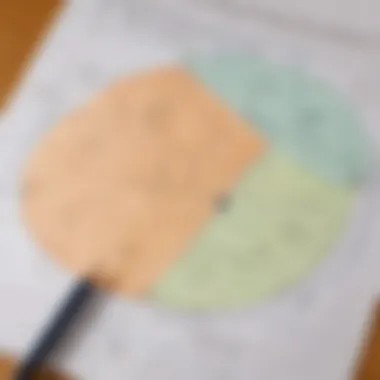
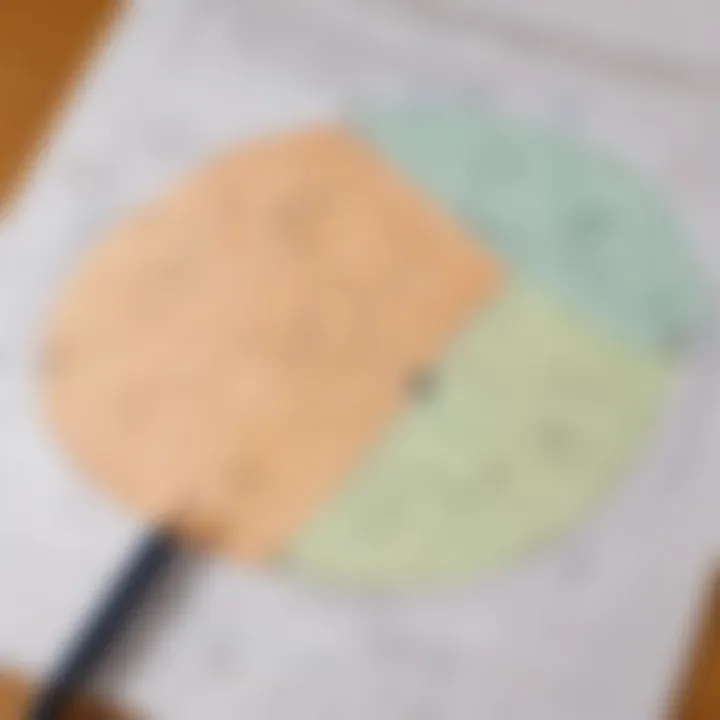
The exploration of graphic organizers in math education is greatly enriched by case studies that showcase real-world applications and effects. By closely examining specific examples in classrooms, we can see how these tools have made a tangible difference not just in student understanding but in overall learning outcomes. Case studies provide vital evidence that supports theories and practices—without these, it becomes hard to paint a complete picture of a strategy's value.
In math education, employing graphic organizers has been not just about making classes visually appealing. It's about fostering connections between concepts and reinforcing understanding. When teachers share their experiences, highlighting success stories and comparative studies, it provides invaluable insight into both effective implementation and potential pitfalls.
Success Stories from Classrooms
From coast to coast, educators have introduced graphic organizers in their classrooms with remarkable success. For example, a third-grade teacher in California utilized T-Charts to help her students differentiate between geometric shapes. The students were able to visually categorize and compare properties of each shape, leading to a concrete grasp of the concepts.
Another inspiring case comes from a fifth-grade class in New York. By integrating concept maps into their lessons on fractions, students showed accelerated understanding of fraction equivalences. The ability to visualize relationships between fractions helped them confidently tackle more complex problems and encouraged math discussions among peers, fostering collaborative learning.
What's noteworthy is the shift in student attitudes as well. When math becomes less abstract and more relatable through these organizers, students often show increased engagement. They feel empowered, leading to higher enthusiasm in tackling mathematical challenges.
Comparative Studies on Learning Outcomes
Beyond anecdotal evidence, comparative studies examining graphic organizers against traditional teaching methods have revealed significant impacts on learning outcomes. Research indicates that classrooms using graphic organizers tend to report higher test scores and improved retention of information.
One such study conducted in a midwestern school district compared two groups of fifth graders: one exposed to standard lectures, while the other used graphic organizers during math instruction. The results were telling. Students utilizing organizers scored on average 15% higher in assessments focused on comprehension and application of mathematical concepts.
Furthermore, longitudinal studies suggest that the advantages extend beyond immediate assessments. Students who practiced with graphic organizers not only performed better on tests but also retained the information longer, illustrating that for young students, the organizational aspects of learning stick when visualized effectively.
Future Directions for Graphic Organizers in Math Education
As education continues to evolve, so must the tools we use to teach. Graphic organizers have demonstrated their worth in enhancing mathematical understanding. However, it's essential to look ahead. The future of graphic organizers in math education is not just about keeping up; it’s about adapting to the ever-changing landscape of learning environments and technologies.
Thinking about future directions means recognizing trends that affect how students learn. One aspect is integrating these tools into digital platforms. This not only caters to the needs of modern classrooms but also provides an avenue for interactive and engaging learning experiences. The rise of technology in education signifies no signs of slowing down. Teachers have to be prepared to incorporate digital graphic organizers that can accommodate virtual lessons, allowing flexibility and accessibility for their students.
Another critical direction for graphic organizers is innovation in their design and usage. As more data comes to the surface regarding learning styles and cognitive processes, these organizers can evolve to align with current research and findings. This transformation can include templates that are adaptable for various topics or even customizable tools that allow students to create their visual aids. By understanding that one size doesn't fit all, educators can foster an environment where students take ownership of their learning.
In short, looking ahead means understanding that the potential for graphic organizers in math education is immense. Their adaptability, when paired with advancements in technology and innovative design, holds the key to classrooms that are not only more effective but also more inclusive and engaging.
Adapting to Digital Platforms
The shift toward digital learning environments cannot be overstated. As classrooms increasingly lean on technology, the importance of adapting graphic organizers to these platforms becomes apparent. Digital graphic organizers have the advantage of being interactive, allowing students to manipulate and customize their learning experience.
For instance, tools like Microsoft OneNote and Google Drawings enable students to create and share organized thoughts with ease. Not to mention, these platforms often come with cloud storage, making it simple for students to access their work from anywhere. This accessibility fosters collaboration, as classmates can work together in real time, sharing insights and building upon each other's ideas.
Additionally, educators can track student progress through these digital platforms. This allows for immediate feedback, enabling tailored instruction based on the individual needs of each student. Adapting to digital means not only following trends but preparing students for a world that relies heavily on technology.
Innovations in Design and Usage
Innovations in the design of graphic organizers can significantly impact their effectiveness in the classroom. As learning theories evolve, so should the tools we use. Flexible designs that allow for personalization cater to diverse learners. For instance, a teacher might utilize a customizable template that enables students to incorporate their interests or previous knowledge into their graphic organizer. This approach not only enhances engagement but can also improve comprehension by making lessons more relevant to students’ lives.
Moreover, teachers can incorporate gamified elements in graphic organizers. Imagine a system where students can earn rewards for creating and collaborating on their visual aids. Engaging students in this manner can heighten their motivation and interest in math.
In innovation, there is opportunity. By embracing fresh ideas in designing graphic organizers, educators can create an environment that encourages critical thinking and exploration.
In summary, the future directions for graphic organizers in math education point toward a blend of technology, personalization, and innovation. Embracing these changes will not only improve educational outcomes but can also inspire a generation of learners who are ready to tackle complex mathematical ideas with confidence.
Culmination
In wrapping up our exploration of graphic organizers in math education, it’s vital to recognize their significant impact on both teaching and learning processes. These tools serve as visual aids that help to clarify complex mathematical concepts, breaking them down into more digestible parts. When teachers utilize graphic organizers effectively, they not only enhance students' understanding but also promote greater engagement and enthusiasm towards math.
Summarizing Key Takeaways
A few critical points stand out from our discussions:
- Enhanced Comprehension: Graphic organizers help students visualize relationships between concepts. For instance, using a concept map might show how fractions relate to whole numbers, assisting students in grasping how those concepts connect rather than viewing them in isolation.
- Memory Retention: The visual structure offered by these organizers allows for better memorization techniques. When students engage with material visually, it often sticks in their minds longer, akin to how a catchy jingle can linger in one's thoughts.
- Critical Thinking Support: By prompting students to categorize information, graphic organizers encourage them to think critically about math problems. This could mean making a flowchart to outline steps to solve an equation, which fosters analytical skills essential for future studies.
"Good teaching is more about creating connections and less about content delivery."
Encouraging Future Use in Education
As we look ahead, it’s clear that the potential for graphic organizers in math education is vast. Educators are encouraged to continue exploring new and innovative ways to embed these tools into their curriculums. Integrating graphic organizers digitally can also broaden the horizon, allowing students to innovate their own tools and methods of organization. This adaptability is crucial for those growing in an increasingly tech-savvy world.
- The role of teachers is not just to impart knowledge but to inspire creative thinking. By encouraging students to experiment with graphic organizers, we open doors to personalized learning experiences.







